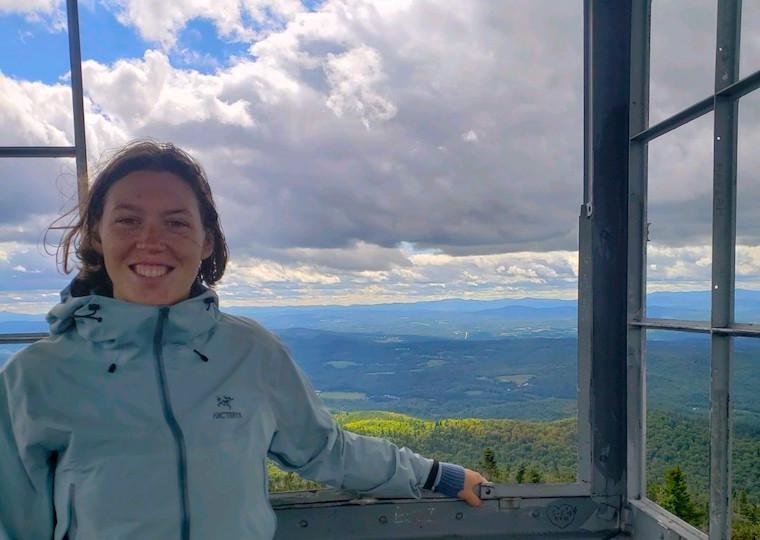Winter Term: Butterflies, One of Nature’s Flashiest Pollinators
September 14, 2020
Yvonne Gay

Mary Perchlik '21 adores butterflies. That interest led to her month-long project in August, which combined the study of butterflies on a species level while maintaining a broader focus on environmental systems that support butterflies and their interactions between different plants, insects, and habitats.
Being some of the flashiest pollinators, Perchlik says, butterflies were easiest to identify, find, and track as a newbie watcher. After familiarizing herself with the most common butterflies in her hometown in Vermont, she hopes to attract more butterflies to her own garden to support species diversity in her area. This past August, 10 to 15 species visited Perchlik’s garden on a given day—mostly Meadow and Great Fritillaries, Pearl Crescents, and White and Red Admirals.
“It’s impossible to study butterflies in a silo, since they are connected to flowers and plants, temperature, migration, and predators as both butterflies and caterpillars,” says the environmental studies major. “Observing the changes in the weather as the summer passes and how that affects plants and therefore butterfly behavior and species abundance gives a holistic view on the habitat and environment where I live. The study of butterflies and caterpillars incorporates the study of the entire environment and ecosystem. Since creating a sense of place and connecting to an environment takes time and patience, committing to observing an animal and their habitats brings me closer to my environment as a whole.”
The project also brought about new insights for Perchlik. In one instance she noted observing a butterfly she had never seen before feeding on Red Maple tree sap. She later learned it was a Northern Pearly-Eye, a species that gets moisture and nutrients from mud, dung, tree sap, decaying fruit, and carrion.
“I also saw some behavior that surprised me this summer, especially with the White Admirals,” says Perchlik. “The White Admirals in my area are usually found along roads, feeding on minerals and salt among the gravel. This year I’ve seen them flying around fields much more.”
During her study, Perchlik worked remotely with Bryan Pfeiffer, a renowned educator, writer, and naturalist in Montpelier, Vermont. She also worked on an independent project with Oberlin College’s Becky Bode, grounds service manager, and Meghan Riesterer, assistant vice president of Campus Energy and Sustainability. The project, financed by the Oberlin College Green Edge Fund, would establish a butterfly garden on campus. Perchlik says the project could use the help of a student who is on campus this semester.
As a longtime butterfly enthusiast, Perchlik will continue observing the insects as long as the weather allows. She also plans to pursue her interest in environmental and regional planning in Vermont, where she is studying remotely this academic year.
Tags:
You may also like…
The Impact of Collective Action
March 27, 2025
How our work as a community helped us achieve carbon neutrality.
Oberlin Summer Research Institute Partners with Career Exploration and Development, Expands Capacity
January 17, 2025
For almost 20 years, Oberlin Summer Research Institute, or OSRI, has been fostering community and the development of Oberlin students. Now, beginning in summer 2025, the program will offer exciting new opportunities.
Making a Difference with Business
December 10, 2024
Omukoko Okoth ’25 chose Oberlin College for its values and opportunities, and in order to take advantage of all that Oberlin has to offer, he decided to participate in the business integrative concentration.


